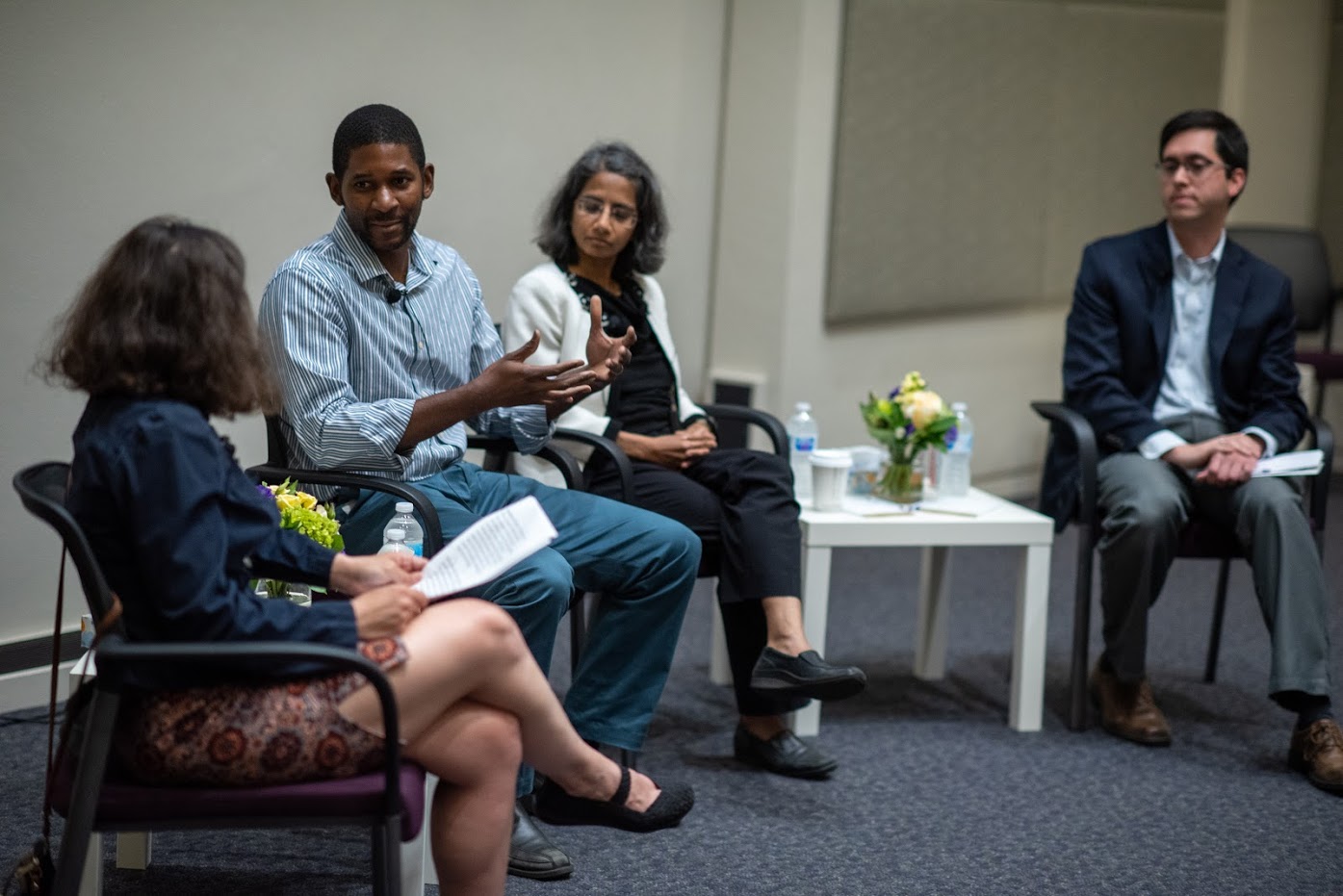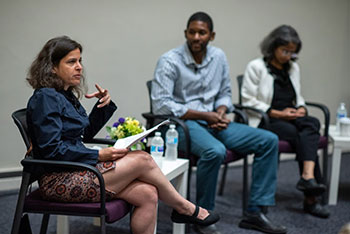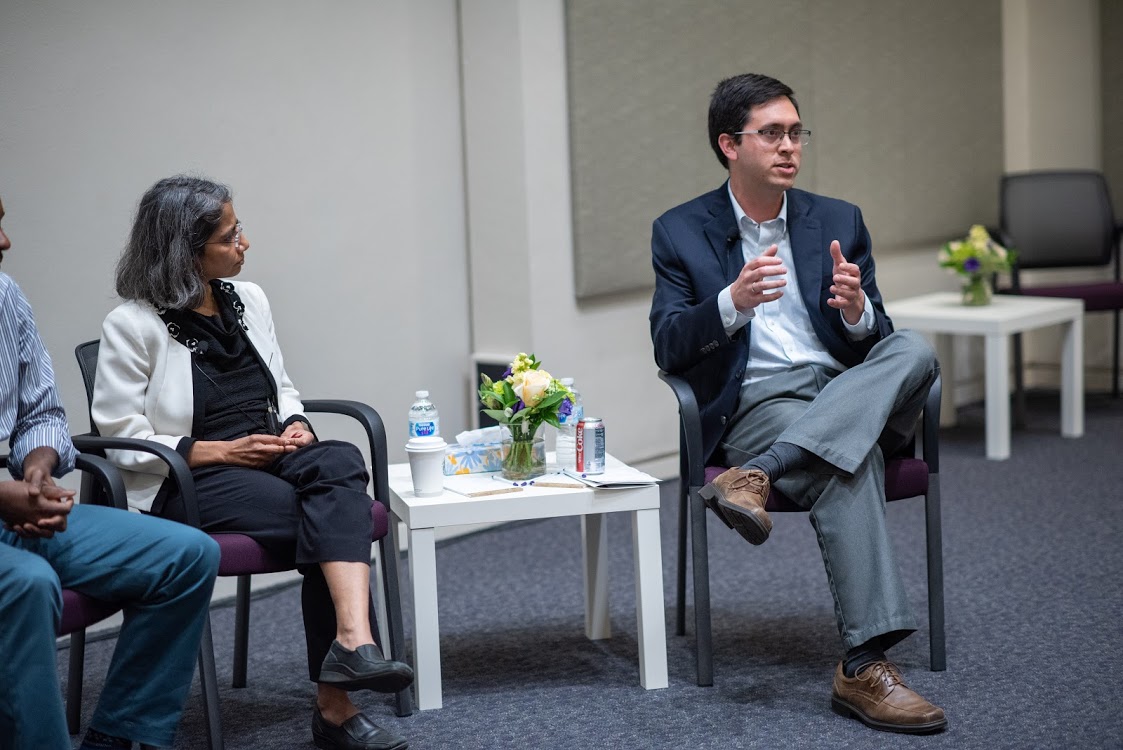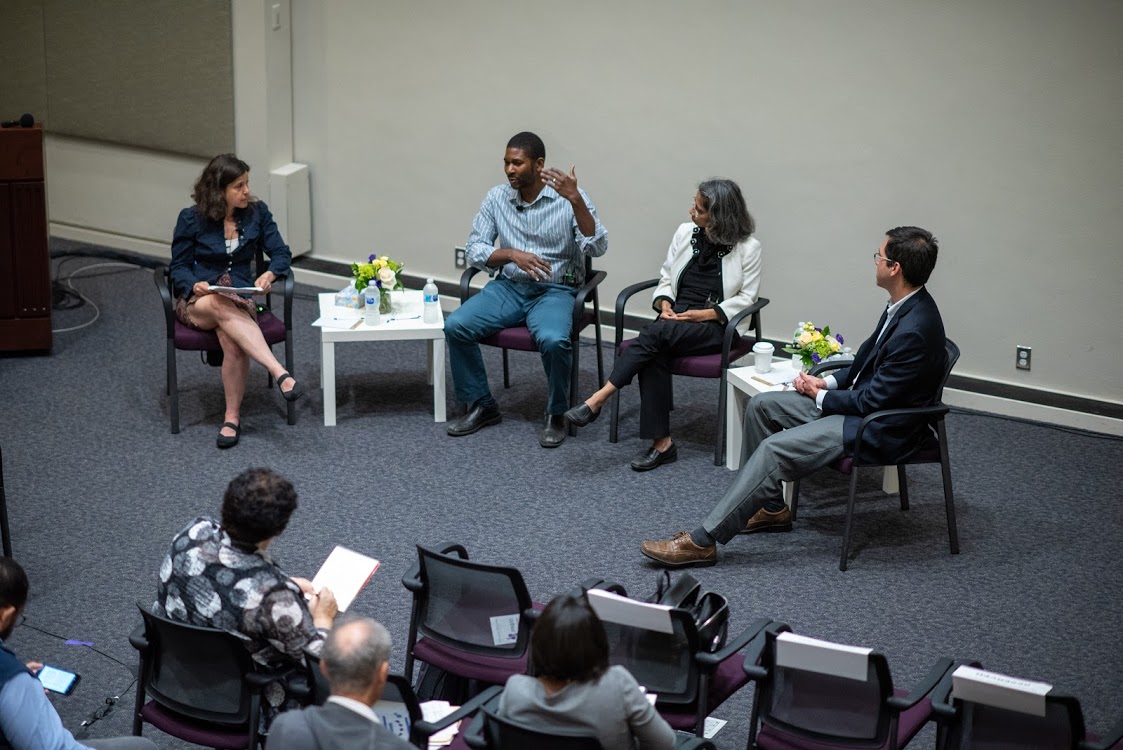Causes and Consequences of Government Spending
Get all our news

From left: Sarah Karp dissected government spending on key social policies with Kirabo Jackson, Monica Prasad, and Matthew Notowidigdo.
What do we know about U.S. government spending on key social policies such as education and healthcare, and how might the United States differ from its peers? Sarah Karp, WBEZ’s education reporter, explored the issue in an IPR@50 panel with IPR sociologist Monica Prasad and IPR economists Kirabo Jackson and Matthew Notowidigdo.
Does more government spending produce better outcomes?
Jackson said that his research and that of others at IPR demonstrates that in education, it does.
Increases in school funding levels since the 1970s have led to educational improvements evident in student achievement, educational attainment, adult earnings, and incarceration rates, he continued. For example, the National Assessment of Educational Progress—the “Nation’s report card”—shows that today’s fourth grader knows what a sixth grader knew in 1971.
“The evidence out there is pretty strong that if you increase spending, particularly for schools that do not spend a lot to begin with, you do get a lot of bang for your buck,” Jackson said.
What about government spending on healthcare?
Notowidigdo emphasized that health insurance protects people’s finances, and that the expansion of public health insurance through the Affordable Care Act has, according to his research, worked to protect people from bankruptcy and other financial misfortune. Research is now focused on distinguishing healthcare spending on activities that deliver improved health—such as preventing heart disease—from those that do not—such as some diagnostic scans.
How does U.S. spending compare to other countries?
As Prasad explained, the United States rejected value-added taxation as regressive—falling harder on the poor than the rich—in favor of progressive income taxes and property taxes to fund government. As a result, the American government’s size and spending are constrained in comparison to other wealthy countries.
U.S. government spending differs most, she pointed out, in healthcare, parental leave, and labor market policies. Because the government is more fragmented and decentralized than in European countries, for example, its spending is less efficient on items such as prescription drugs.
“We’re getting about the same outcomes, but spending a lot more,” Prasad said when comparing American and European government spending on healthcare.
Government spending, Notowidigdo said, might not just lead to immediate results, such as financial protection or access to health insurance, but the long-term results in health and education might prove to be “an investment in the future.”
“Maybe if you get better healthcare when you’re young, that will improve your health when you’re older,” Notowidigdo said. “The additional spending helps people end up being more productive later in life.”




Kirabo Jackson is the Abraham Harris Professor of Education and Social Policy. Matthew Notowidigdo is associate professor of economics. Monica Prasad is professor of sociology. All three are IPR fellows. Sarah Karp (moderator) is WBEZ’s education reporter.
Photo credits: Rob Hart.
Published: June 27, 2019. Updated: July 16, 2019.


